Newsletter
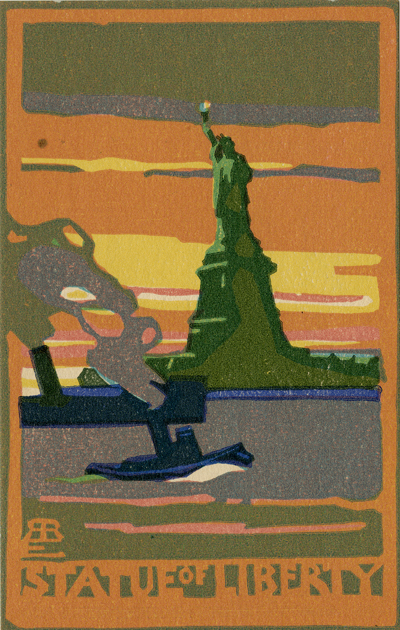
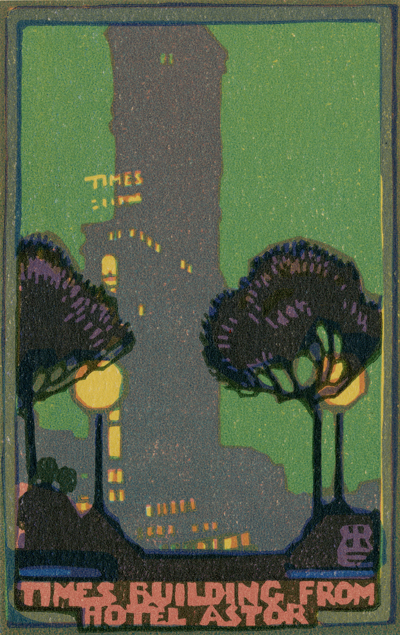
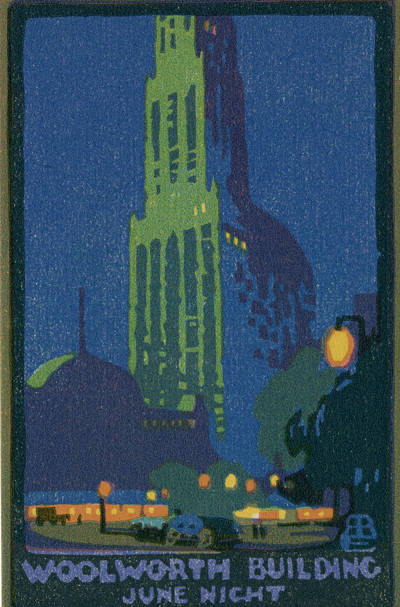
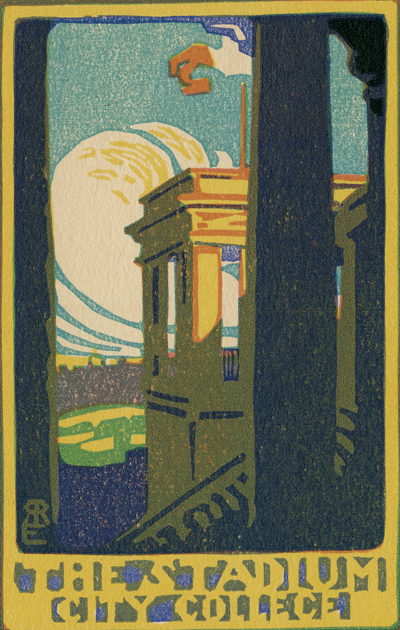
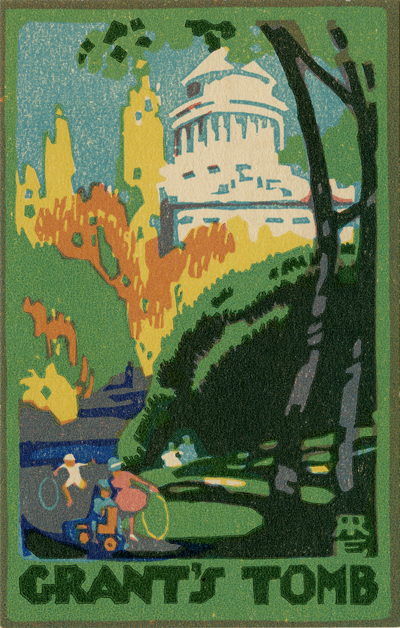
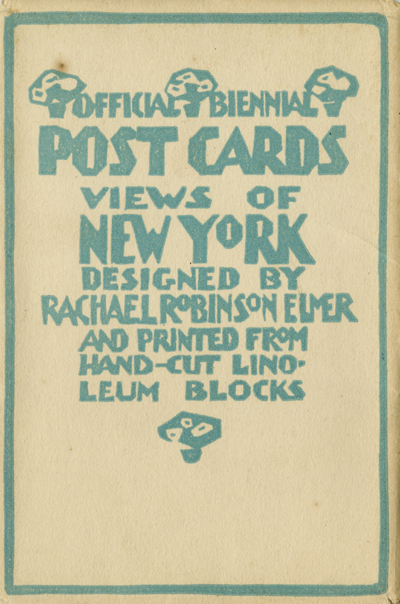
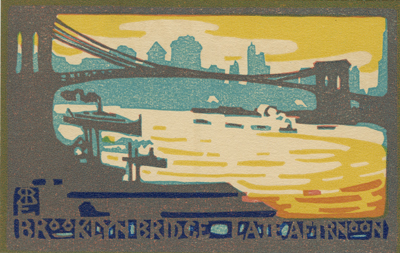
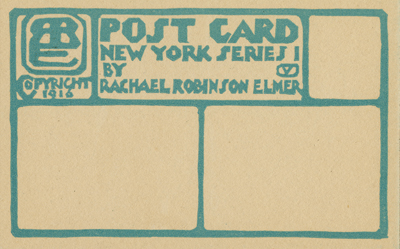
Views of New York, a rare complete set of 6 hand-cut linoleum block prints, including the scarce original envelope-woodblock, by noted American artist Rachael Robinson Elmer 1878 - 1919. Published in 1916, this set was sold in a cleverly designed, cream colored envelope advertising the title and artist. While the fronts of the postcards are adorned with the architectural images the backs are neatly divided into sections by graphic lines providing space for hand written messages.
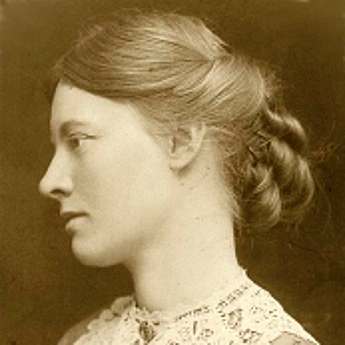
Rachael Robinson Elmer was born in Vermont to a multi-talented Quaker family and displayed an artistic flair at a very young age. Encouraged by her mother she began taking art lessons and by age 12 was commuting to New York City to study in the studio of prolific artist Max Ernst. New York City was to become not only a city that she loved, but also where she married, made her home and was the subject of a series of postcards that would define her and changed the aesthetic of American postcard as art. By age 20 she was studying at the famous New York Art Students League under the tutelage of pioneer impressionist Childe Hassam. His impact on her work is unmistakable, and he seems to have conveyed his love of vibrant city scenes to her as well. She became one the noted Chicago publisher P.F. Volland's roster of women artists publishing both sets of her postcards. Views of New York remain among Vollard's most rare and sought after products. She was one of millions of people that died from the Spanish flu epidemic in 1919.
The first in the series, The Art Lovers New York, is a collection of 12 postcards painted in water color portraying well-known New York scenes. Her change in mediums from watercolor to linoleum block prints signals a stylistic change from impressionism to the newly developing art deco.

Stencil Canvas Panel designed circa 1893/94 by Louis H. Sullivan; American 1856-1924 for the Chicago Stock Exchange Trading Room - 25" x 69".
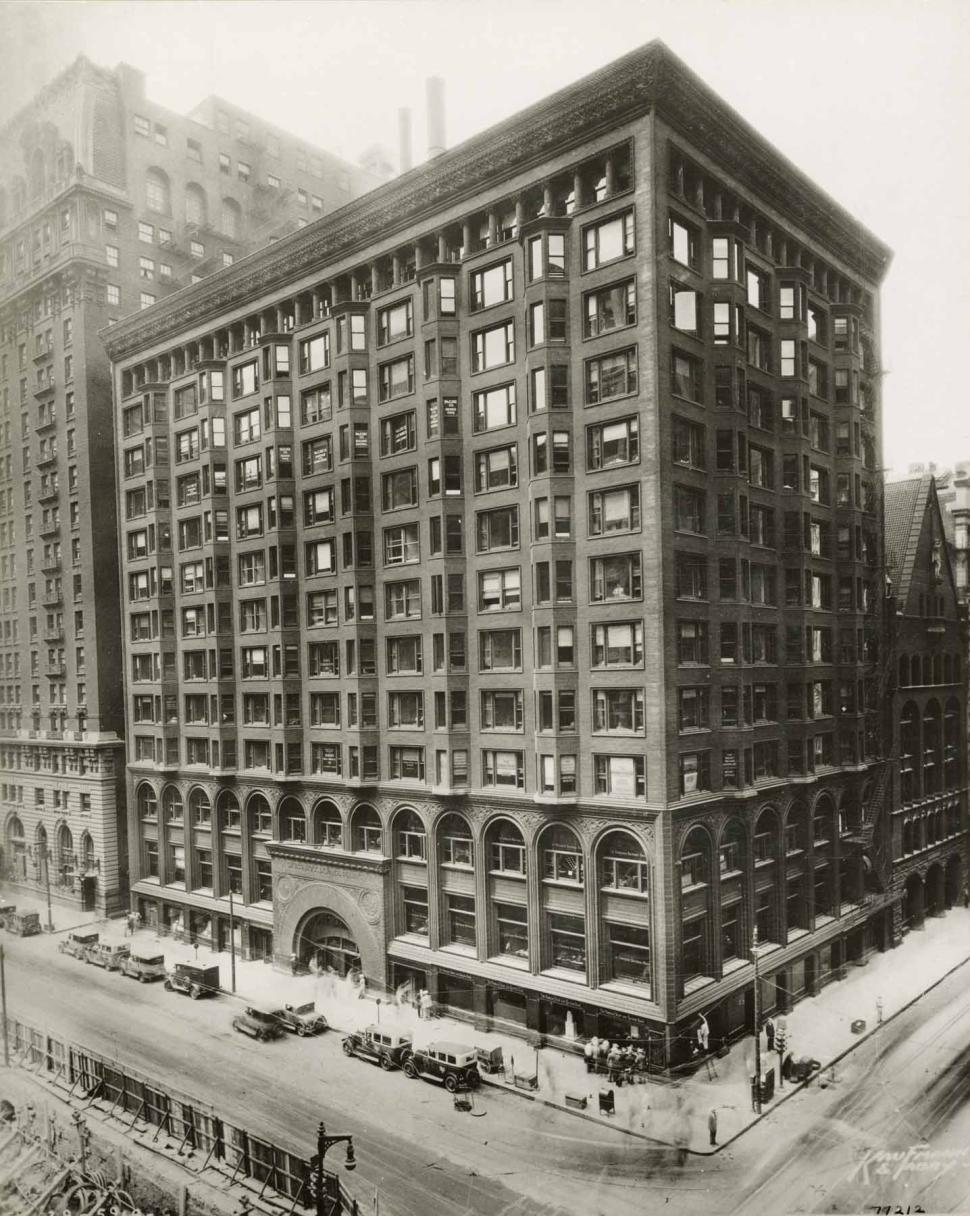
The Chicago Stock Exchange before its demolition in 1972.
The Two Red Roses Foundation is fortunate to have acquired a portion of a decorative stenciled canvas from the Trading Room of the Chicago Stock Exchange. From the time of its completion in 1894 until its demolition in 1972, the Chicago Stock Exchange stood as a powerful example of the contributions of Dankmar Adler and Louis H. Sullivan to the formation of the towering, metal framed commercial building. In the Stock Exchange, the architects fully joined structure and function with creative architectural forms and unrivaled ornamental detailing, demonstrating the principles of what Sullivan called "organic architecture".
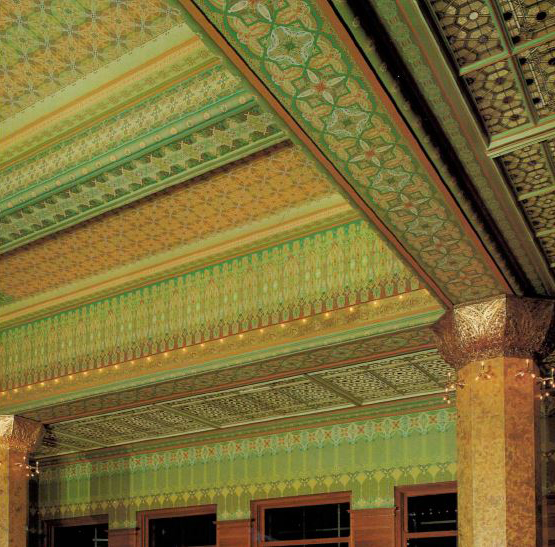
Trading Room from the Chicago Stock Exchange
During the nineteenth century, one of the most popular methods of decorating interior surfaces, furniture, and small objects was the ancient technique of stenciling. Voids werecut in a flexible, impervious material (usually sheets of heavy, treated paper), and paint was forced through the openings with a stiff, short-bristled brush. The technique interested Sullivan. He employed it in his first commission, the Moody Tabernacle, and further developed it to unparalleled richness in the Trading Room.
We are fortunate that, after the demolition of the Chicago Stock Exchange building in 1972, there were institutions like the Metropolitan Museum of Art, the Seattle Museum of Art and others with the vision and courage to rescue important architectural elements of building. The Art Institute of Chicago invested substantial resources to save the entire trading room floor and arched entrance to the building.
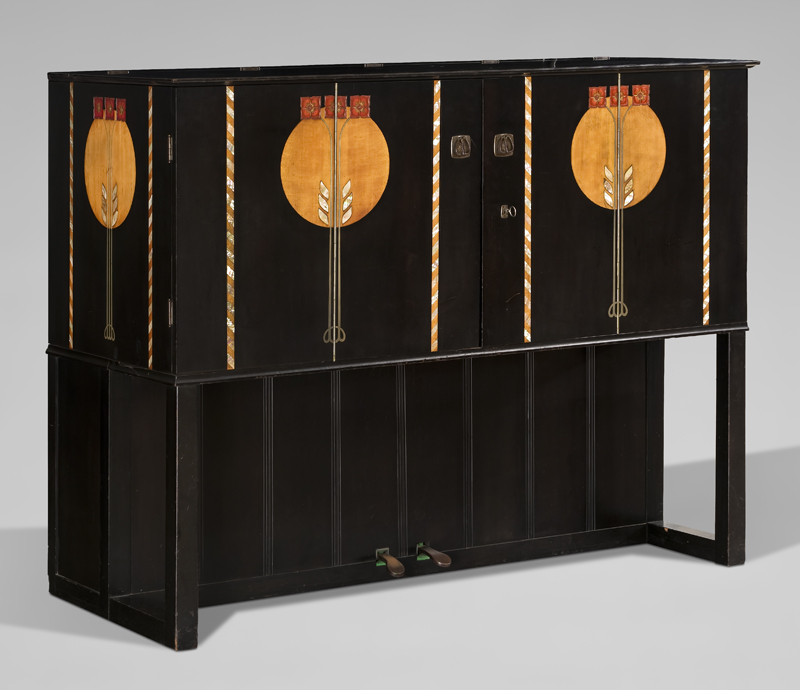
The Two Red Roses Foundation owns a selection of arts and crafts era pianos in its collection. Always highly discerning when adding objects to the collection, the Foundation's pianos are exceptional examples created by the most important piano designers and makers from the period. Recognizing the importance of the piano and its relation to Arts and Crafts furniture, the Foundation has devoted an entire section in its book, Arts and Crafts Furniture From The Collection Of The Two Red Roses Foundation, to pianos.
The piano illustrated to the right is a Manxman cottage upright designed by Mackay Hugh Baillie Scott in 1901. It was built with sycamore, mother-of-pearl, pewter, paint, brass, and enamel by Carl Ronisch from Dresden, Germany. The Carl Rönisch piano manufacturing company, founded in 1845, was a prestigious manufacturer, patronized by the courts of Saxony, Spain, Sweden, Norway, Hungary and Russia. You may refer to the piano section of the TRRF Furniture catalog for the entire essay on this piano and on another Manxman upright pianoforte. Both pianos will be displayed in the Great Hall of the Museum of American Arts & Crafts Movement. Below is a brief except from the painstakingly researched, rich and colorful essay written by Susan Montgomery, Ph.D.:
Baillie Scott was a firm believer in the Arts and Crafts values of function and suitability. Beautiful furniture, he claimed, should be appropriately useful and in "absolute harmony with its surrounding." In other words, a furnished room should be considered as a whole, not a collection of disparate elements: "The essential point then in the choice of furniture may be said to be not so much the individual merit of a particular thing as its relation to everything else in the room. The furniture should appear to grow out of the requirements of the room, to represent the finishing touches of a scheme which had its inception when the first stone of the house was laid, and an alien importation from the upholsterer's of spick and span suites, at war with themselves and their surroundings."
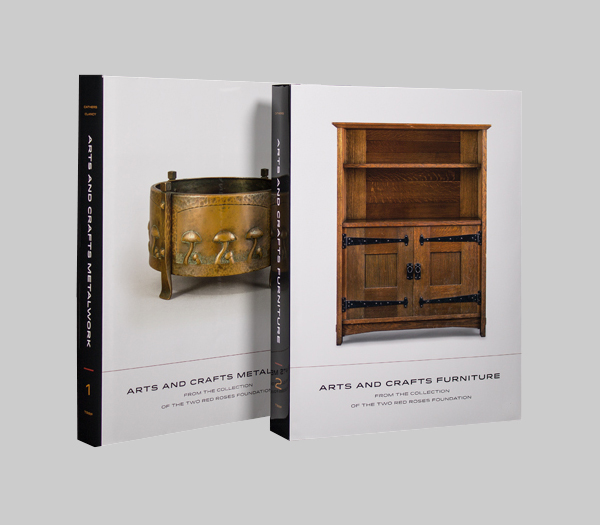
The first two TRRF catalogues of its extensive fine and decorative arts collection are available for sale in our online bookstore along with other publications and exhibit catalogues by TRRF. Before the scheduled opening of the Museum of the American Arts and Crafts Movement in summer 2017, we plan to publish further titles in a series of catalogues of the TRRF Collection, including Tiles and Architectural Faience, Pottery, Lighting, Woodblocks, and Photography. You may also browse through the selection of used Arts and Crafts books by clicking here.
We do not process credit card payments. You may utilize Paypal, who will process your credit card payment even if you do not have a Paypal account, or simply mail a check to our address and, upon its receipt, we will ship your purchase promptly.